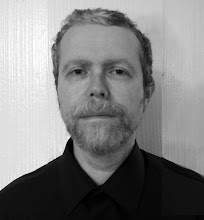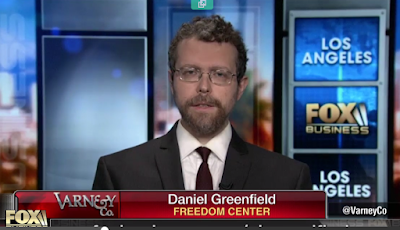With Simchat Torah a cycle of the Torah ends and begins again and so does the year. From Zot HaBracha 'This is the Blessing', the final Parsha of the Torah, we go to the beginning again of Bereishis. From Moshe Rabbeinu the greatest leader of Israel dying in the desert to the creation of the world out of chaos and emptiness. The contrasts seem staggering but there are connections and linkages that show that the transition is indeed no transition at all.
The Midrash tells us that instead of beginning with Alef, the first letter of the Hebrew alphabet, we begin the Torah and the creation of the world with the Beit in Bereishis (In the Beginning), the second letter; in order to represent Bracha 'blessed.' The final Parsha is of course Zot HaBracha so that the Torah begins and ends with a blessing making the entire Torah itself one long blessing that never ceases as we come to end and return to the beginning we are participating in one long Bracha, blessing.
We begin with G-d's blessing of creating the world and sustaining all life and then creating people who themselves had the power to bless or curse, to make the world a better or worse place. Sefer Bereishis, the book of Bereishis, ends with Yaakov Avinu, our forefather Yaakov, blessing his sons. Zot HaBracha ends with Moshe Rabbeinu, G-d's greatest prophet blessing the nation of 12 tribes that has sprung from them. Bereishis begins with G-d creating a world to be settled by men and Zot HaBracha ends with the Jewish people prepeared to enter the land that G-d has given us and to settle it.
According to the Baal HaTurim, the letters of the first word Bereishis, (In the Beginning) can be rearranged to read Brit Aish. Covenant of Fire, reffering to the Torah. Zot HaBracha also refers to the Torah as Aishdash, 'a fiery law.' We learn that the Torah was written before the creation of the world, 'black fire on white fire' and Zot HaBracha represents the conclusion of the Torah as it was completed.
The Torah itself represents a paradox in that its writing predated the world it describes and its writing postdated its own creation. That we finish reading the Torah only to begin reading it again is another paradox that renders the conclusion, no conclusion at all. And through this we see the power of the Torah to transcend the ordinary physical realities of time and to allow us in limited ways to do so as well. As we dance in a circle, as the Jews in the Bait Hamikdash (the Holy Temple) walked in a circle around the altar of G-d, we form a shape that is without beginning or end and is a paradox as well.
Also according to the Baal HaTurim, the word Bereishis, has a Gematria (numerical value) equivalent to 913. So do the words Yisrael Bachar Ba'Amim (Israel was chosen out of all the nations.) The world in Bereishis begins with a seeming blank slate. We see an empty world and one whose purpose is unknown and unfulfilled. The final word of the Torah is also 'Yisrael,' though in the beginning the world seemed aimless and purposeless, its purpose was always clear and that was the choice of the Jews to bear the Torah. As we close a circle, we begin it and in doing so we see the eternal wisdom and greatness of G-d.
The Midrash tells us that instead of beginning with Alef, the first letter of the Hebrew alphabet, we begin the Torah and the creation of the world with the Beit in Bereishis (In the Beginning), the second letter; in order to represent Bracha 'blessed.' The final Parsha is of course Zot HaBracha so that the Torah begins and ends with a blessing making the entire Torah itself one long blessing that never ceases as we come to end and return to the beginning we are participating in one long Bracha, blessing.
We begin with G-d's blessing of creating the world and sustaining all life and then creating people who themselves had the power to bless or curse, to make the world a better or worse place. Sefer Bereishis, the book of Bereishis, ends with Yaakov Avinu, our forefather Yaakov, blessing his sons. Zot HaBracha ends with Moshe Rabbeinu, G-d's greatest prophet blessing the nation of 12 tribes that has sprung from them. Bereishis begins with G-d creating a world to be settled by men and Zot HaBracha ends with the Jewish people prepeared to enter the land that G-d has given us and to settle it.
According to the Baal HaTurim, the letters of the first word Bereishis, (In the Beginning) can be rearranged to read Brit Aish. Covenant of Fire, reffering to the Torah. Zot HaBracha also refers to the Torah as Aishdash, 'a fiery law.' We learn that the Torah was written before the creation of the world, 'black fire on white fire' and Zot HaBracha represents the conclusion of the Torah as it was completed.
The Torah itself represents a paradox in that its writing predated the world it describes and its writing postdated its own creation. That we finish reading the Torah only to begin reading it again is another paradox that renders the conclusion, no conclusion at all. And through this we see the power of the Torah to transcend the ordinary physical realities of time and to allow us in limited ways to do so as well. As we dance in a circle, as the Jews in the Bait Hamikdash (the Holy Temple) walked in a circle around the altar of G-d, we form a shape that is without beginning or end and is a paradox as well.
Also according to the Baal HaTurim, the word Bereishis, has a Gematria (numerical value) equivalent to 913. So do the words Yisrael Bachar Ba'Amim (Israel was chosen out of all the nations.) The world in Bereishis begins with a seeming blank slate. We see an empty world and one whose purpose is unknown and unfulfilled. The final word of the Torah is also 'Yisrael,' though in the beginning the world seemed aimless and purposeless, its purpose was always clear and that was the choice of the Jews to bear the Torah. As we close a circle, we begin it and in doing so we see the eternal wisdom and greatness of G-d.




Comments
Beautiful
ReplyDeletePost a Comment